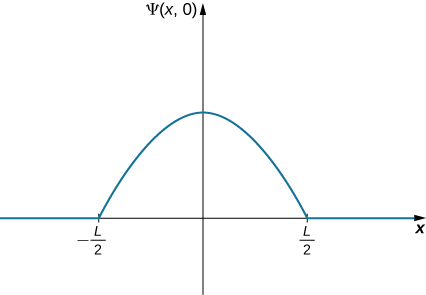| << Chapter < Page | Chapter >> Page > |

where A is the amplitude of the wave function and is its wave number. Beyond this interval, the amplitude of the wave function is zero because the ball is confined to the tube. Requiring the wave function to terminate at the right end of the tube gives
Evaluating the wave function at gives
This equation is satisfied if the argument of the cosine is an integral multiple of and so on. In this case, we have
or
Applying the normalization condition gives , so the wave function of the ball is
To determine the probability of finding the ball in the last quarter of the tube, we square the function and integrate:
This momentum is much too small to be measured by any human instrument.
We are now in position to begin to answer the questions posed at the beginning of this section. First, for a traveling particle described by , what is “waving?” Based on the above discussion, the answer is a mathematical function that can, among other things, be used to determine where the particle is likely to be when a position measurement is performed. Second, how is the wave function used to make predictions? If it is necessary to find the probability that a particle will be found in a certain interval, square the wave function and integrate over the interval of interest. Soon, you will learn soon that the wave function can be used to make many other kinds of predictions, as well.
Third, if a matter wave is given by the wave function , where exactly is the particle? Two answers exist: (1) when the observer is not looking (or the particle is not being otherwise detected), the particle is everywhere ; and (2) when the observer is looking (the particle is being detected), the particle “jumps into” a particular position state with a probability given by —a process called state reduction or wave function collapse . This answer is called the Copenhagen interpretation of the wave function, or of quantum mechanics.

Notification Switch
Would you like to follow the 'University physics volume 3' conversation and receive update notifications?